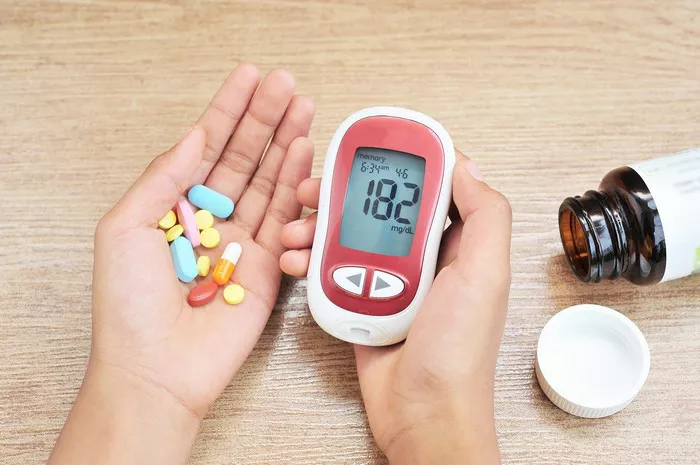Insulin resistance is a condition where the body’s cells become less responsive to the hormone insulin, leading to elevated blood glucose levels. This can be a precursor to type 2 diabetes and is often associated with other metabolic conditions such as obesity, hypertension, and dyslipidemia. Accurate diagnosis and effective management of insulin resistance are crucial for preventing the progression to type 2 diabetes and mitigating associated health risks. This article will explore the various tests used to diagnose insulin resistance and identify which test is considered the best for assessing this condition.
Understanding Insulin Resistance
Insulin resistance occurs when the body’s cells fail to respond adequately to insulin, a hormone produced by the pancreas that helps regulate blood glucose levels. When cells are resistant to insulin, glucose cannot enter them efficiently, leading to elevated blood glucose levels. The pancreas compensates by producing more insulin, but over time, this can lead to beta-cell dysfunction and eventually type 2 diabetes.
Insulin resistance is often associated with several risk factors, including obesity, particularly abdominal obesity, a sedentary lifestyle, and genetic predisposition. It can also be linked to other conditions such as polycystic ovary syndrome (PCOS) and metabolic syndrome.
Why Testing for Insulin Resistance is Important
Testing for insulin resistance is important for several reasons:
Early Detection: Identifying insulin resistance early allows for timely intervention to prevent or delay the onset of type 2 diabetes.
Risk Assessment: Testing helps assess the risk of developing other related conditions such as cardiovascular disease.
Guiding Treatment: Accurate testing helps tailor treatment strategies, including lifestyle changes, dietary modifications, and medications.
Monitoring Progress: Testing helps monitor the effectiveness of interventions and track improvements or deterioration in insulin sensitivity.
Types of Tests for Insulin Resistance
Several tests are available to assess insulin resistance, each with its advantages and limitations. These tests can be broadly categorized into:
- Direct Measures of Insulin Sensitivity
- Indirect Measures of Insulin Sensitivity
- Biomarkers and Indices
1. Direct Measures of Insulin Sensitivity
Hyperinsulinemic-Euglycemic Clamp
The hyperinsulinemic-euglycemic clamp is considered the gold standard for measuring insulin sensitivity. This test involves infusing insulin at a constant rate while maintaining blood glucose levels at a normal range through an infusion of glucose. The amount of glucose required to maintain normal blood glucose levels is an indirect measure of insulin sensitivity.
Advantages:
High Accuracy: Provides a precise measurement of insulin sensitivity.
Comprehensive: Can distinguish between different degrees of insulin resistance.
Limitations:
Complexity: Requires specialized equipment and expertise.
Invasiveness: Involves continuous intravenous infusion and frequent blood sampling.
Cost: Expensive and not typically used in routine clinical practice.
Intravenous Glucose Tolerance Test (IVGTT)
The IVGTT involves administering a glucose load intravenously and measuring blood glucose and insulin levels at various time points to assess how efficiently the body clears glucose from the bloodstream. The results can provide an estimate of insulin sensitivity.
Advantages:
Detailed Assessment: Provides information on glucose metabolism and insulin action.
Clinical Relevance: Can be used to diagnose glucose intolerance and type 2 diabetes.
Limitations:
Invasiveness: Requires intravenous glucose administration and frequent blood sampling.
Complexity: More complex and time-consuming than other tests.
2. Indirect Measures of Insulin Sensitivity
Homeostasis Model Assessment of Insulin Resistance (HOMA-IR)
HOMA-IR is a mathematical model used to estimate insulin resistance based on fasting blood glucose and insulin levels. The formula is:
HOMA-IR=Fasting Insulin(μU/mL)×Fasting Glucose(mg/dL)405\text{HOMA-IR} = \frac{\text{Fasting Insulin} (\mu U/mL) \times \text{Fasting Glucose} (mg/dL)}{405}
Advantages:
Convenience: Requires only fasting blood samples.
Cost-Effective: Relatively inexpensive compared to direct measures.
Limitations:
Estimation: Provides an estimate rather than a direct measurement.
Variability: May be influenced by factors such as fasting duration and stress.
Quantitative Insulin Sensitivity Check Index (QUICKI)
QUICKI is another index used to estimate insulin sensitivity based on fasting blood glucose and insulin levels. The formula is:
QUICKI=1log(Fasting Insulin(μU/mL))+log(Fasting Glucose(mg/dL))\text{QUICKI} = \frac{1}{\log(\text{Fasting Insulin} (\mu U/mL)) + \log(\text{Fasting Glucose} (mg/dL))}
Advantages:
Simplicity: Easy to calculate from fasting blood samples.
Efficiency: Quick and cost-effective.
Limitations:
Estimate: Provides an estimation of insulin sensitivity rather than a direct measurement.
Sensitivity: May not be as accurate in certain populations or conditions.
3. Biomarkers and Indices
Insulin Sensitivity Index (ISI)
ISI is a measure derived from various tests, including oral glucose tolerance tests (OGTT) or mixed-meal tolerance tests (MMTT). It combines information on glucose and insulin responses to estimate insulin sensitivity.
Advantages:
Comprehensive: Provides a detailed assessment based on glucose and insulin responses.
Adaptable: Can be used in various testing scenarios.
Limitations:
Complexity: Requires multiple test conditions and calculations.
Variability: Results can vary based on the specific testing protocol used.
Adiponectin and Leptin Levels
Adiponectin and leptin are hormones related to fat metabolism and insulin sensitivity. Lower levels of adiponectin and higher levels of leptin have been associated with insulin resistance.
Advantages:
Biological Insight: Provides information on metabolic processes related to insulin sensitivity.
Complementary: Can be used in conjunction with other tests for a more comprehensive assessment.
Limitations:
Specificity: Hormone levels can be influenced by factors other than insulin resistance.
Complexity: Requires additional testing and interpretation.
The Best Test for Insulin Resistance
Determining the “best” test for insulin resistance depends on various factors, including the clinical context, available resources, and patient considerations. Each test has its strengths and limitations, and the choice of test should be tailored to individual needs and circumstances.
1. Hyperinsulinemic-Euglycemic Clamp
While the hyperinsulinemic-euglycemic clamp is the gold standard for measuring insulin sensitivity due to its high accuracy, it is not practical for routine clinical use due to its complexity and cost. It is primarily used in research settings to provide precise measurements and insights into insulin resistance.
2. HOMA-IR and QUICKI
For most clinical settings, HOMA-IR and QUICKI are the most practical tests. They offer a balance between ease of use, cost, and relevance. HOMA-IR is widely used due to its simplicity and cost-effectiveness, making it suitable for large-scale screening and monitoring. QUICKI is also a valuable tool, particularly in cases where simplicity and speed are essential.
3. Adiponectin and Leptin Levels
Measuring adiponectin and leptin levels can provide additional insights into insulin sensitivity and metabolic health. However, these biomarkers are typically used in conjunction with other tests rather than as standalone measures.
See also: What Helps with Insulin Resistance
Conclusion
Assessing insulin resistance is crucial for diagnosing and managing conditions such as type 2 diabetes and metabolic syndrome. While the hyperinsulinemic-euglycemic clamp remains the gold standard for measuring insulin sensitivity, practical and cost-effective tests like HOMA-IR and QUICKI are commonly used in clinical practice. These tests offer valuable information on insulin resistance and can guide treatment and management strategies.
Incorporating a combination of direct and indirect measures, along with understanding biomarkers and indices, provides a comprehensive approach to assessing insulin resistance. By choosing the appropriate test based on individual patient needs and clinical context, healthcare professionals can effectively manage insulin resistance and improve patient outcomes.
Related topics:
Does Insulin Resistance Make It Hard to Lose Weight?


























